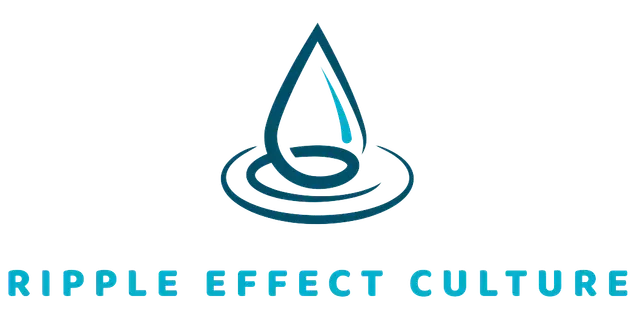How to Create Company Culture
Culture is integral to the employee experience, team performance, and business outcomes.

Culture is integral to the employee experience, team performance, and business outcomes. “Creating” company culture is misleading because culture always exists. A company has as many cultures as it does leaders. Embedding an intentional company culture requires clearly defining the culture and providing structures, processes and tools to live the cultural norms. Having a well-defined culture helps attract, hire, retain, engage and develop a workforce that can carry forward the vision and mission of the business in a consistent and repeatable way.
Defining Your Company Culture
You can think of company culture like an iceberg. Behaviors, policies and practices are above the water line and comprise only a small portion of the iceberg. Under the water are the values that drive these behaviors, policies and practices. Underpinning the values are beliefs about the work and the people.
For example, the above-the-water line for a company might include a video game room, paid “play days” away from the office, and training for all leaders on how to lead through play. You can infer that this company values fun and play. This company likely believes that people are more effective and that the quality of work is better when people engage in play.
When the beliefs, values, behaviors, policies and practices align, it creates a wow culture that drives engagement, loyalty and business success. However, there is often a gap between the stated and lived culture that creates confusion, frustration and loss of productivity.
To define your culture, you can try to start by documenting your foundational beliefs. This can be difficult work because beliefs feel intangible. Another way to approach your culture is to draft your values and work backward to ensure the values accurately represe
nt the underlying beliefs. From there, you can look at the tangible items above the water line and align them with values and beliefs. That sounds easy, right? However, to accurately define the culture, there are many nuances that require honest and often difficult conversations.
For example, I am unaware of any business that does not want its employees to feel like they belong. However, the beliefs driving belongingness impact how belonging is defined and structured. Some businesses may believe that employees belong when surrounded by the industry's most credible, educated and experienced experts. For others, they may believe that employees experience belongingness when they have a voice in decisions, no matter their level of expertise.
Another example is the value of innovation. Innovation in one business may mean taking pride in the innovative products the brand offers. In contrast, another company may mean that innovation is encouraged and expected by everyone in their everyday work.
What a company believes and how it defines its values is neither good nor bad, right or wrong. What matters is that the values accurately represent the culture and that the above-the-waterline items match.
Clearly, defining and cultivating a company culture can be hugely rewarding for any organization, as it will boost morale, employee retention rates, productivity and business results. Prioritizing culture over other considerations is paramount to attracting the right candidates for your business while increasing employee engagement levels for maximum business success in today's increasingly competitive business climate.
Infusing the Culture
Having the organization’s culture defined in a handbook or referenced in occasional communication is not enough to earn the gains that come from a well-defined and lived culture. The culture must be infused into how leaders and employees think, make decisions, behave and act.
Some organizations may believe that policies drive decisions, ensuring consistency in thinking. Other organizations believe that applying values-based decision-making to situations is more important, resulting in more flexibility over standardization. Again, there is no right or wrong approach as long as each organization is true to its beliefs and values.
Infusion ensures that the culture is consistently demonstrated and felt. When the employees feel the organization’s culture, this extends and cascades to the stakeholders and customers. When you think about the employee journey, a number of experiences are common points of infusion.
When accurately defined and effectively communicated, the organization’s culture assists with attracting candidates who are a culture fit and culture add. During the interview process, assessing the match between the culture and the candidate helps the organization and the candidate make decisions about extending and accepting an offer. Alignment during attraction and selection decreases the potential for turnover.
The new hire and onboarding processes offer the opportunity to infuse further, reinforce and teach employees the written and unwritten rules of the company culture. When new employees understand the rules, expectations, and decision-making, their time to productivity decreases. Preparing and guiding new employees to understand the corporate culture is not the sole responsibility of a new hire trainer. Trainers and HR play a role, as do the employee’s leader and the team they are joining.
When designing employee and leadership development, the culture is at the forefront of design, delivery and measurement. Aspects of the culture, like the values, can be overtly called out as part of skill development and for defining the ‘why’ of development. For example, there may be a disconnect if the expectation is that everyone is onsite 5 days a week, yet all development efforts are virtual. If the underlying belief about onsite work is that teams are more effective when together, explaining why the development efforts are not in-person might be challenging.
Performance management is a great way to infuse behavioral expectations associated with the organization’s culture. The performance process is also a means for conversations about how the individual is doing within the context of the culture. A portion of the rewards system can also link to performance. Performing within the context of the culture is an often overlooked consideration. Someone who is a high performer in one organization may or may not be able to deliver the same performance if the new company culture significantly differs from their past experiences.
Ongoing communication about the culture can be considered an always-on marketing campaign. The communication campaign is another opportunity to reflect the culture. If the organization is formal yet the communications are light-hearted and fun, a disconnect erodes trust and negatively impacts the benefits of a well-defined culture.
Establishing or updating and infusing company culture may be complex, but the effort pays off in attracting talent, improving retention and increasing sales and productivity.
If you want your culture to drive even better outcomes, let’s have a conversation. HERE
All Rights Reserved | Ripple Effect Culture
